PT7711- SLAP Tears
1/58
There's no tags or description
Looks like no tags are added yet.
Name | Mastery | Learn | Test | Matching | Spaced |
|---|
No study sessions yet.
59 Terms
Long head of biceps brachii
SLAP lesions may involve the ______________________ or not.
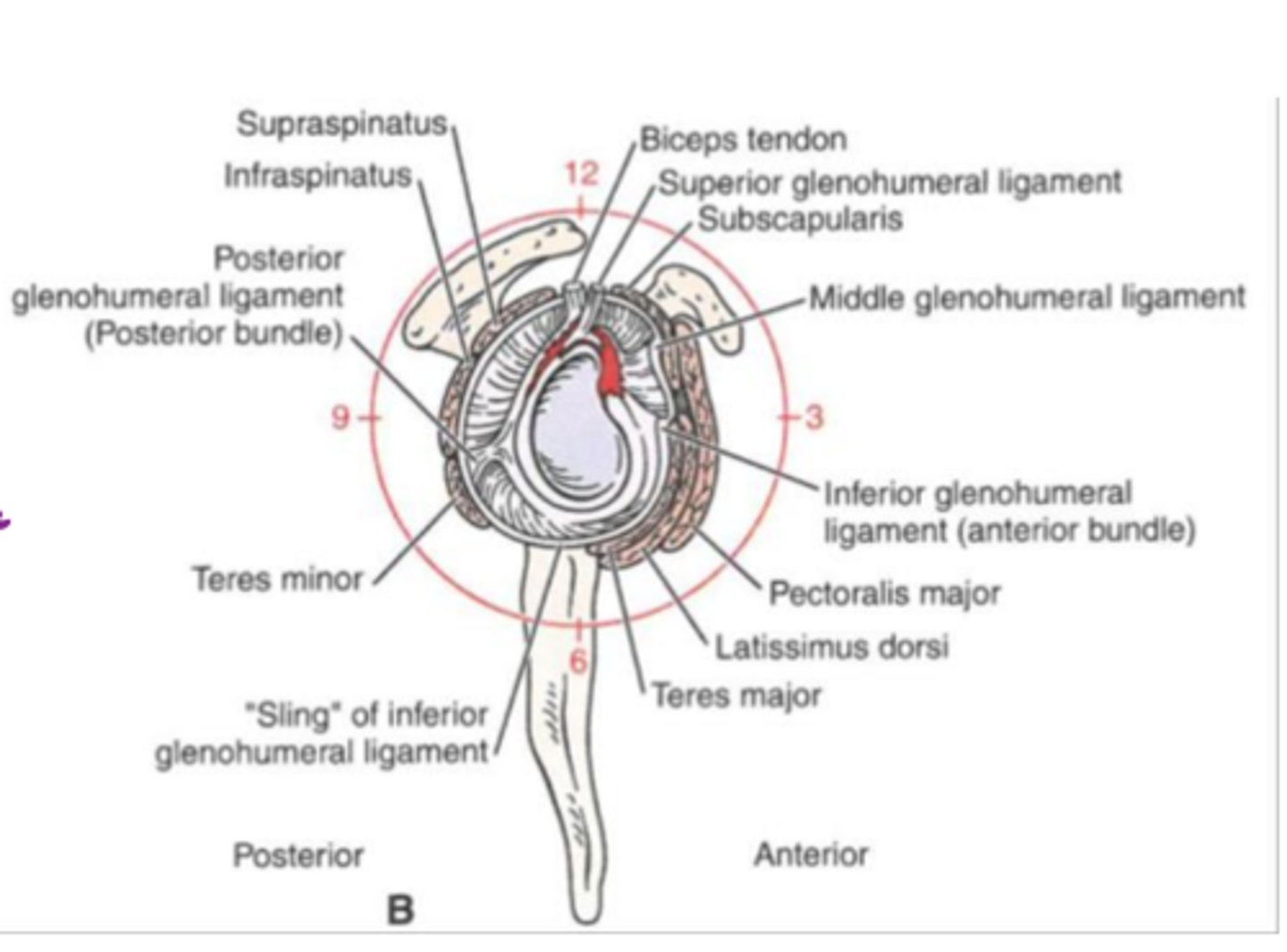
High
If there is RC traumatic injury, then the likelihood of labrum involvement is ___________________.
Throwing
SLAP lesions are often associated with repetitive ____________________ motions.
Non-surgical
SLAP lesions are ______________________ as long as patient is non-throwing athlete.
Bicipital groove; posterior shoulder
Pain around the anterior part of the shoulder (___________________), but if the labrum is involved, pain could also be in the _____________________.
Overhead
Difficulty with _____________________ movements (reduced strength with throwing).
Dead arm
Patients can report a "____________________".
Traction
_______________________ injury leads to neural component (c/o arm feeling heavy, hard to use).
Instability
Often, patients do not c/o ___________________ as much with SLAP tears, but some may be possible.
Normal superior and inferior glenoid labra without sub-labral leak of contrast material.
What does image A show?
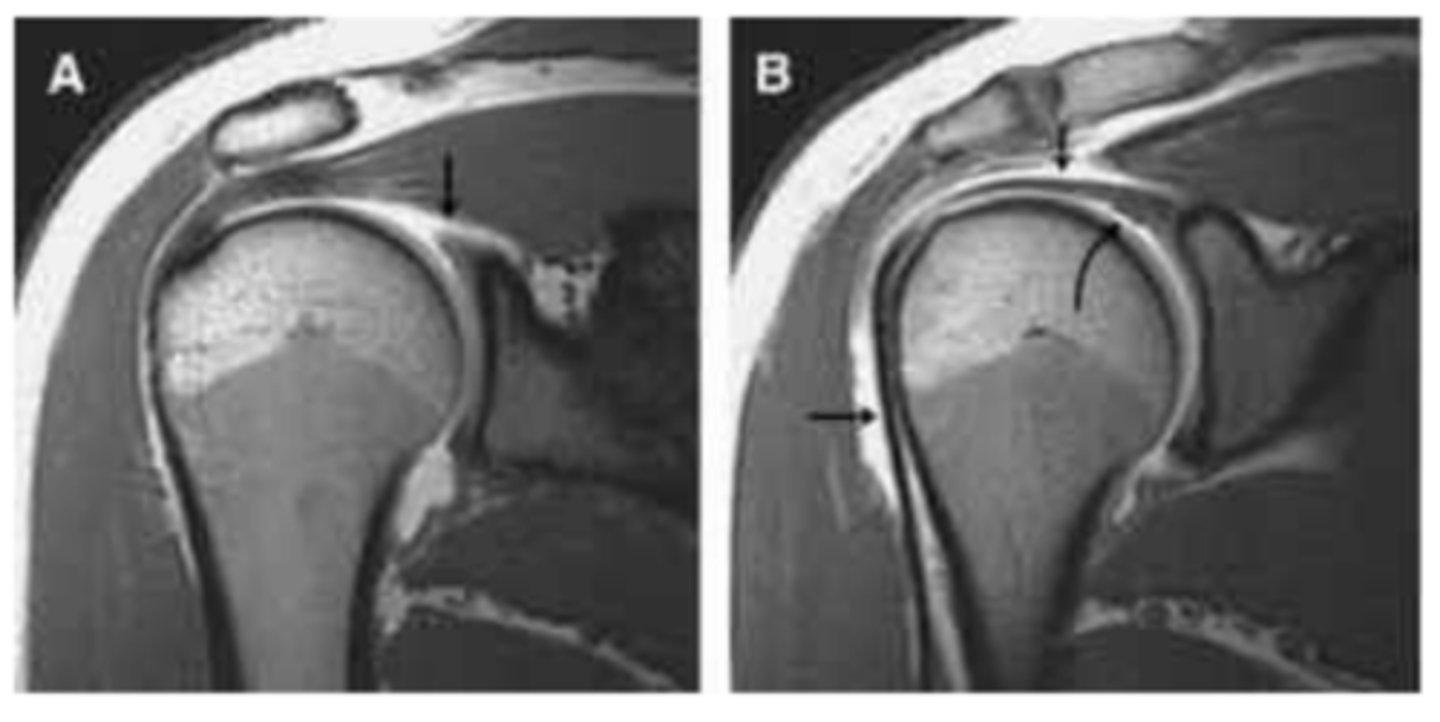
Superior labrum (curved arrow) shows normal relationship to biceps tendon (straight arrows).
What does image B show?
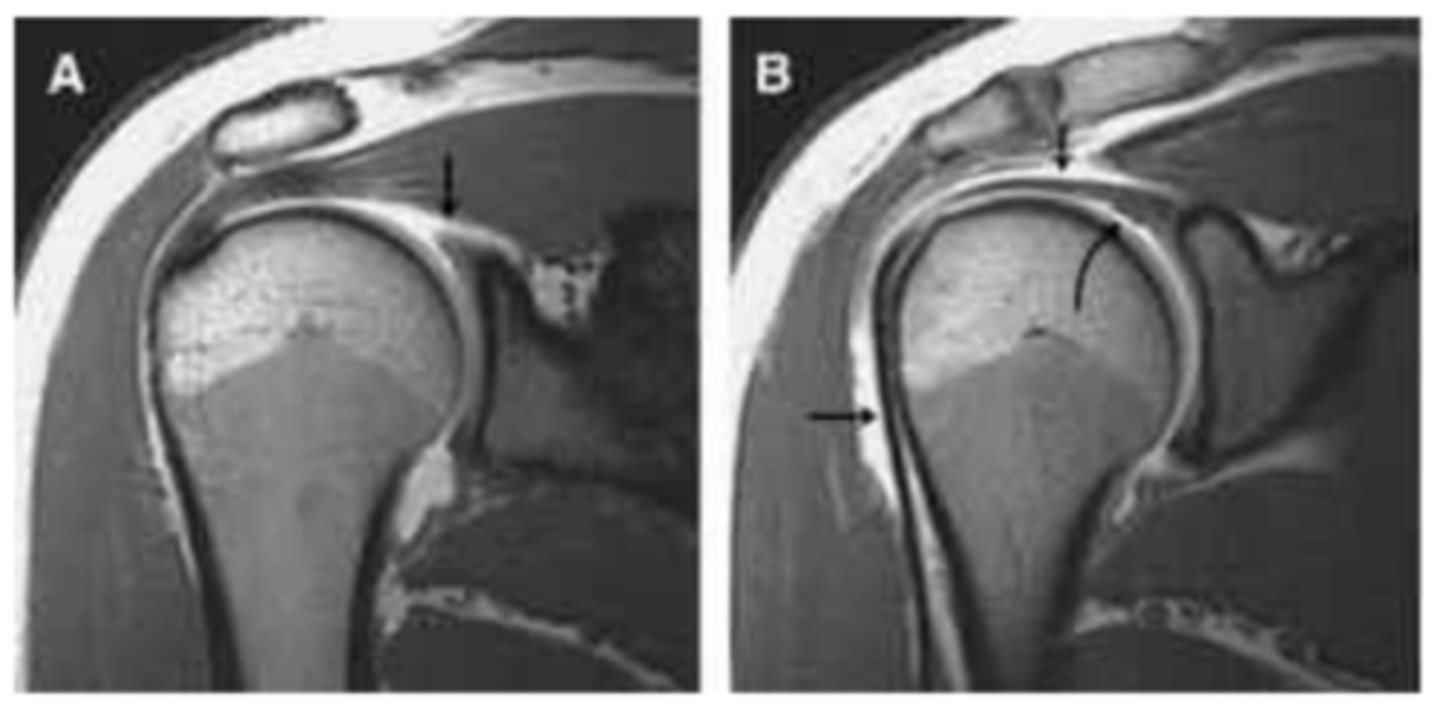
Biceps tendon
A SLAP tear occurs where the _____________________ anchors to the labrum.

SLAP tear
What does the image show?
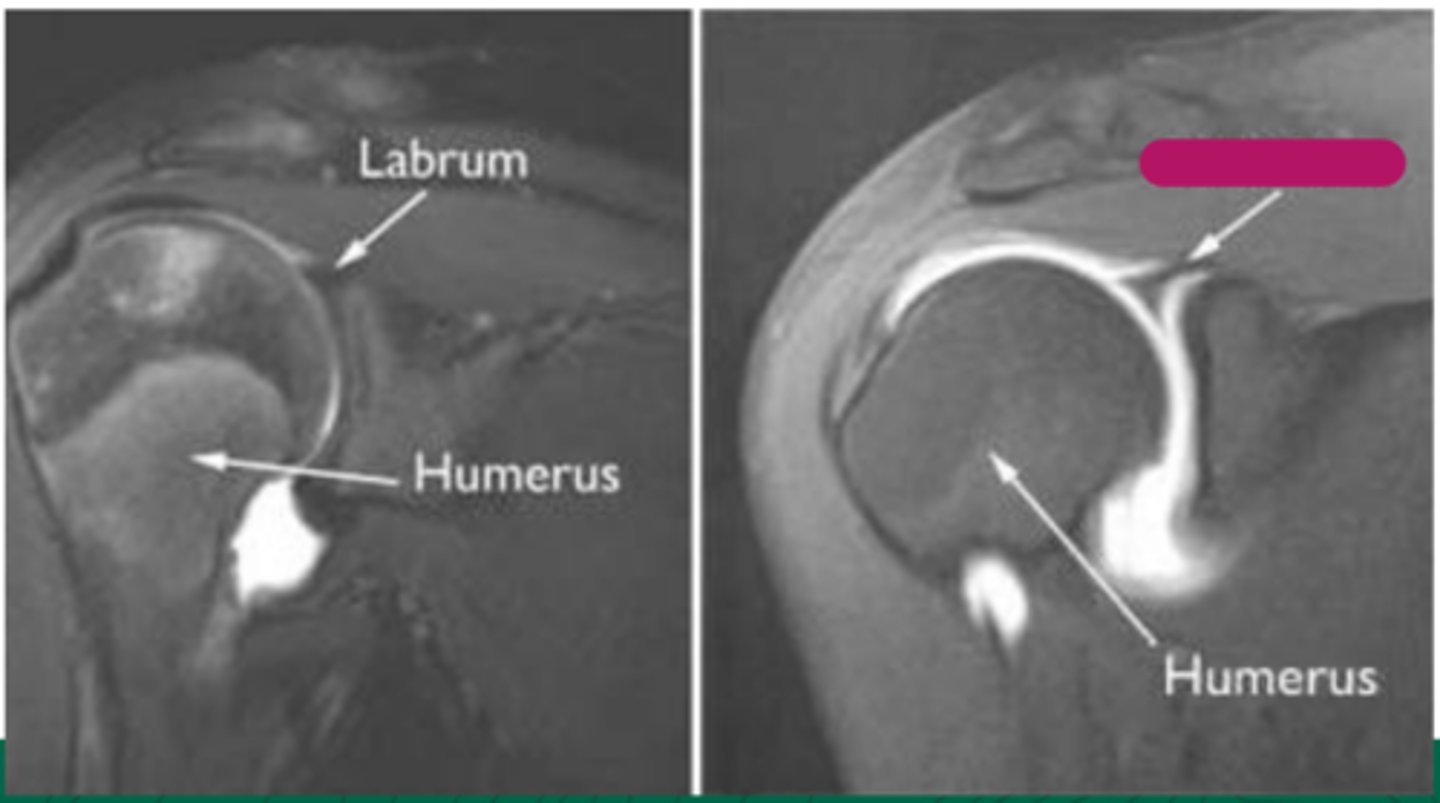
Worn tissue of biceps tendon and labrum
What does the image show?
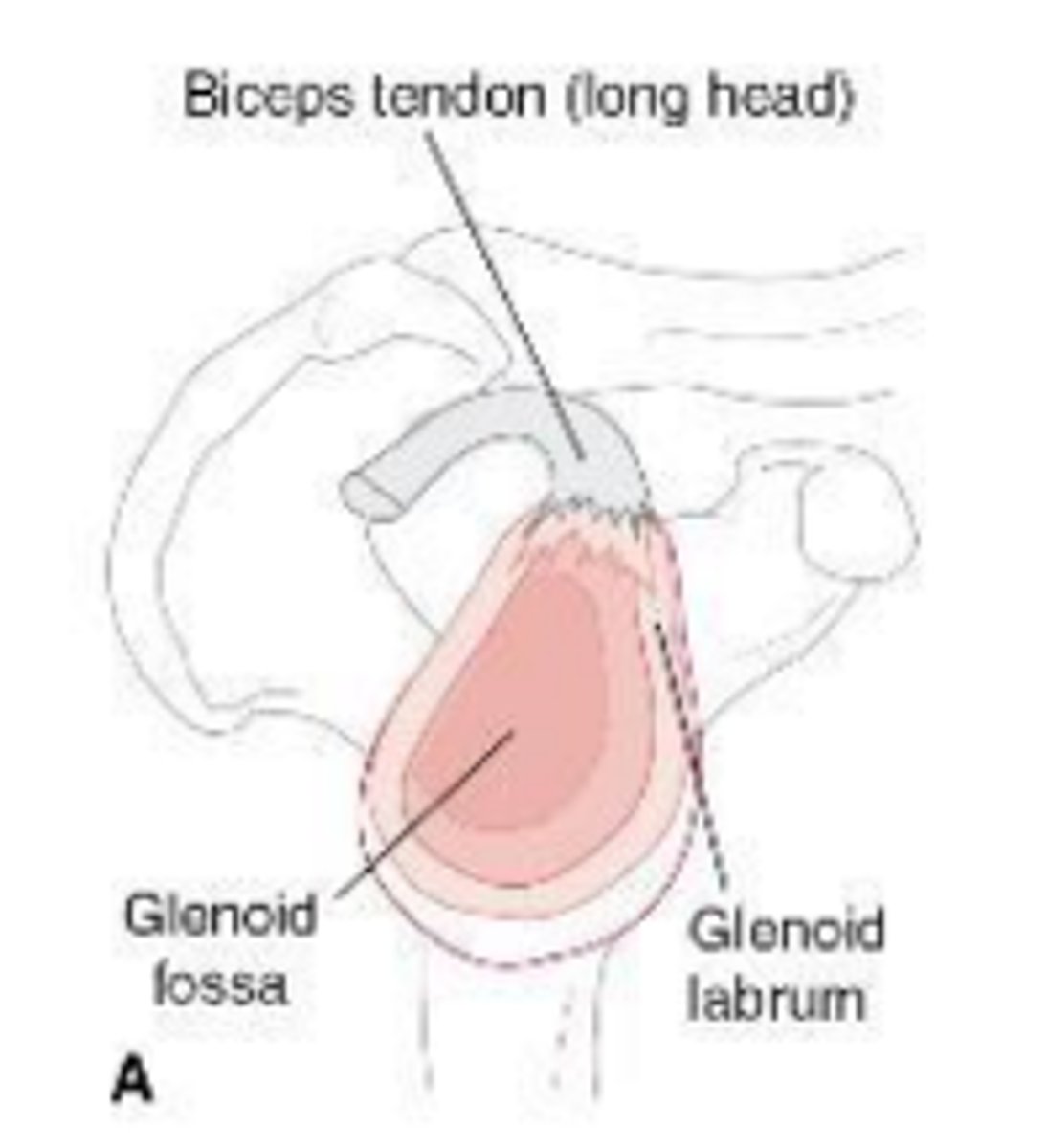
Biceps tendon and labrum becoming detached
What does the image show?
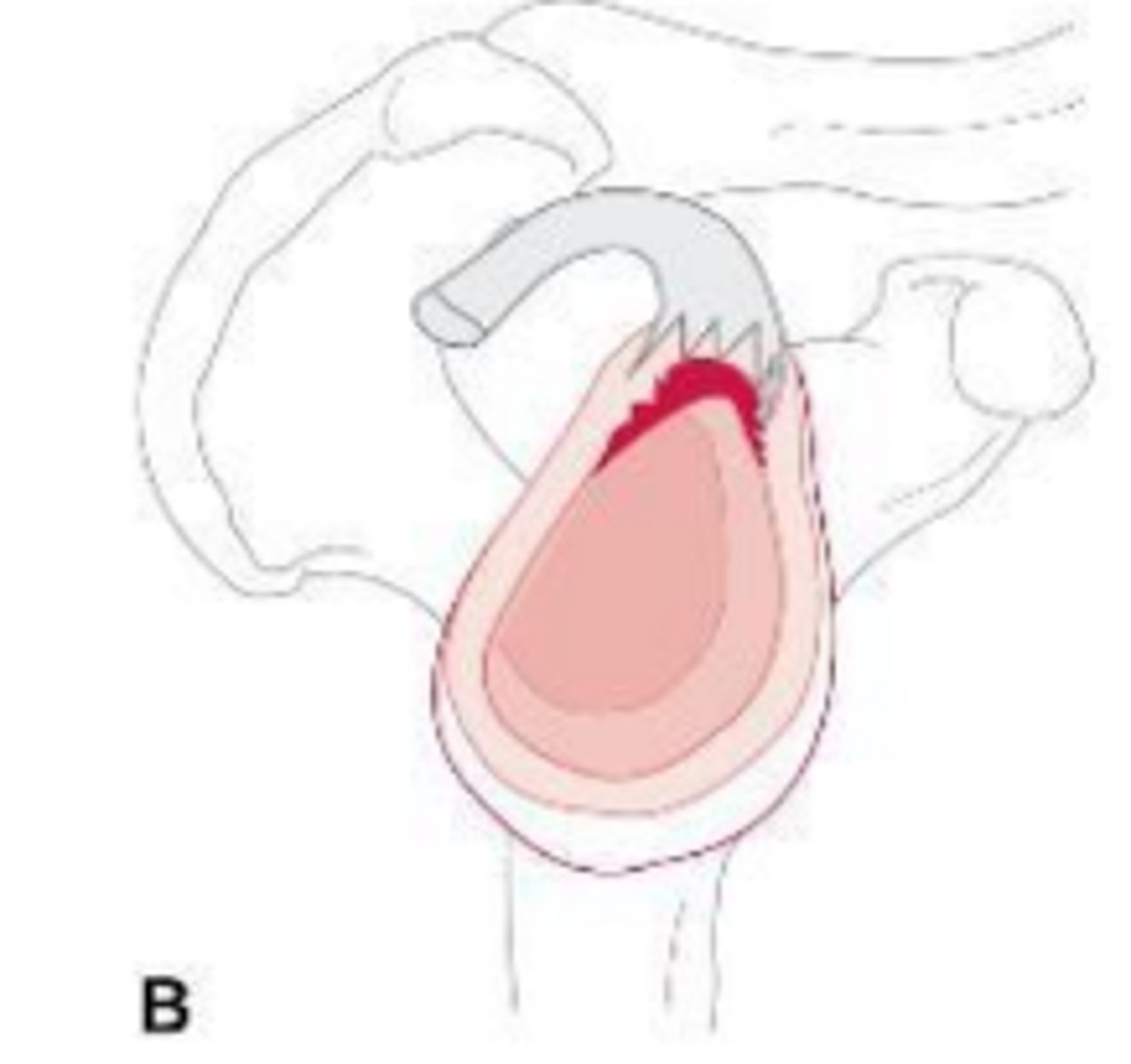
Tissue flap-bucket handle tear of labrum and stable labrum/biceps complex on the glenoid
What does the image show?

Tissue flap-bucket handle tear of labrum, tear extended into biceps tendon, stable or unstable labrum/biceps complex on the glenoid
What does the image show?

Loose body
_____________________ in joint that is getting caught would make the case surgical.
- Active compression test (O'Brien's)
- Labral crank
- Biceps load II
- Resisted supination external rotation test (RSERT)
What are the provocative tests for SLAP tears?
- Overhead throwing (peel-back)
- Traction injury
- Direct compression (FOOSH) arm in front
What are the common MOI for SLAP tears?
Conservative treatment
Clinical Case:
- 25 y/o male
- High velocity, wide grip, pull-up 4 weeks ago
- c/o deep pain, popping, clicking, and locking
- Positive O'Brien's and bicep load test
_____________________ initially recommended
Phase I
Pain management, restoring ROM
Phase II
AROM and low intensity strengthening
Phase III
RC and scapular strengthening, emphasize dynamic stability.
Phase IV
Return to sport power and higher speed activities.
Mobility; strengthening; tear; surgery
Generally, immobilization is followed by progressive ______________________ and then ______________________.
Factors:
- Type of __________________
- Type of ___________________
- Surgeon preference
ER; none; scapular; dynamic stabilization
Additional thing to consider with SLAP repair:
- _________________ motion restriction is still very controversial.
- ____________________ for 4 weeks.
- Progress with up to 10° after the first week if the arm is ABD < 45°.
- _____________________ isometrics and begin early on as well as controlled _______________________.
0-4; passive; ER; elbow flexion; supination
Phase I:
- __________________ weeks
- ROM is ____________________ only with staged goals
- __________________ should be avoided initially then can progress to 20
- Strengthening: No active ___________________ or _____________________. Wrist and scapular strength is fine, submax isometrics for GH joint.
4-6; AAROM; 160; 45; 6th
Phase II:
- ___________________ weeks
- No sling
- ROM: Progress to ____________________
- ~___________________° of elevation, ___________________° of ER
- Can begin AROM by the end of ___________________ week
6-12; AROM; isotonic
Phase III:
- _____________________ weeks
- Full ___________________
- _________________ rotator cuff strengthening and scapular strengthening
- Encourage kinetic chain exercise
12-16 (or 18); throwing; sport-specific
Phase IV:
- _____________________ weeks
- Begin progressive ______________________ program, other _____________________ drills
Bicipital tenodesis
Portion of the biceps tendon is removed and the tendon still intact is fixed is a different location.
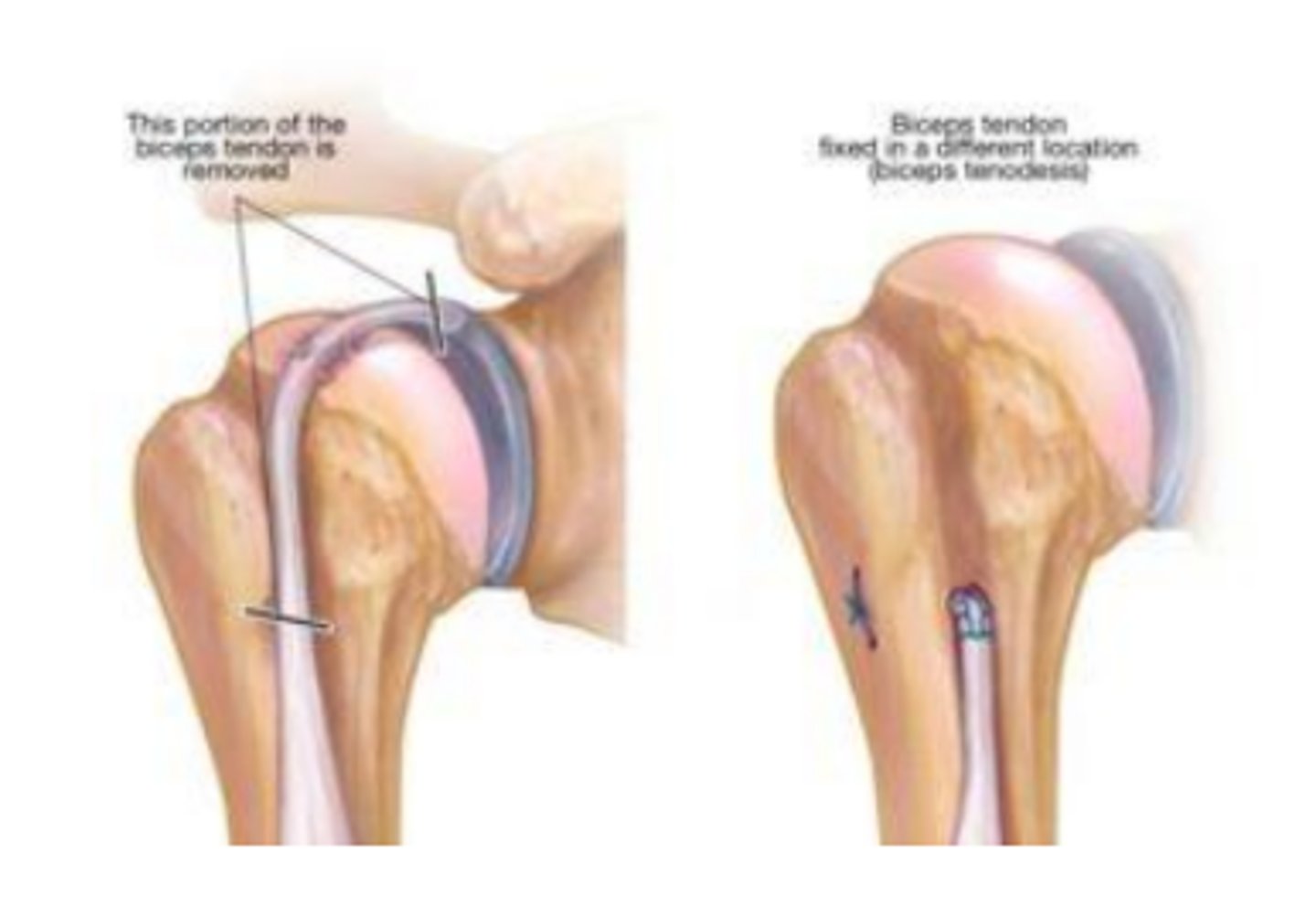
Diseased
Bicipital tenodesis is performed when the bicep is involved in the SLAP tear or __________________ (causing pain).
Windup
Red in image.
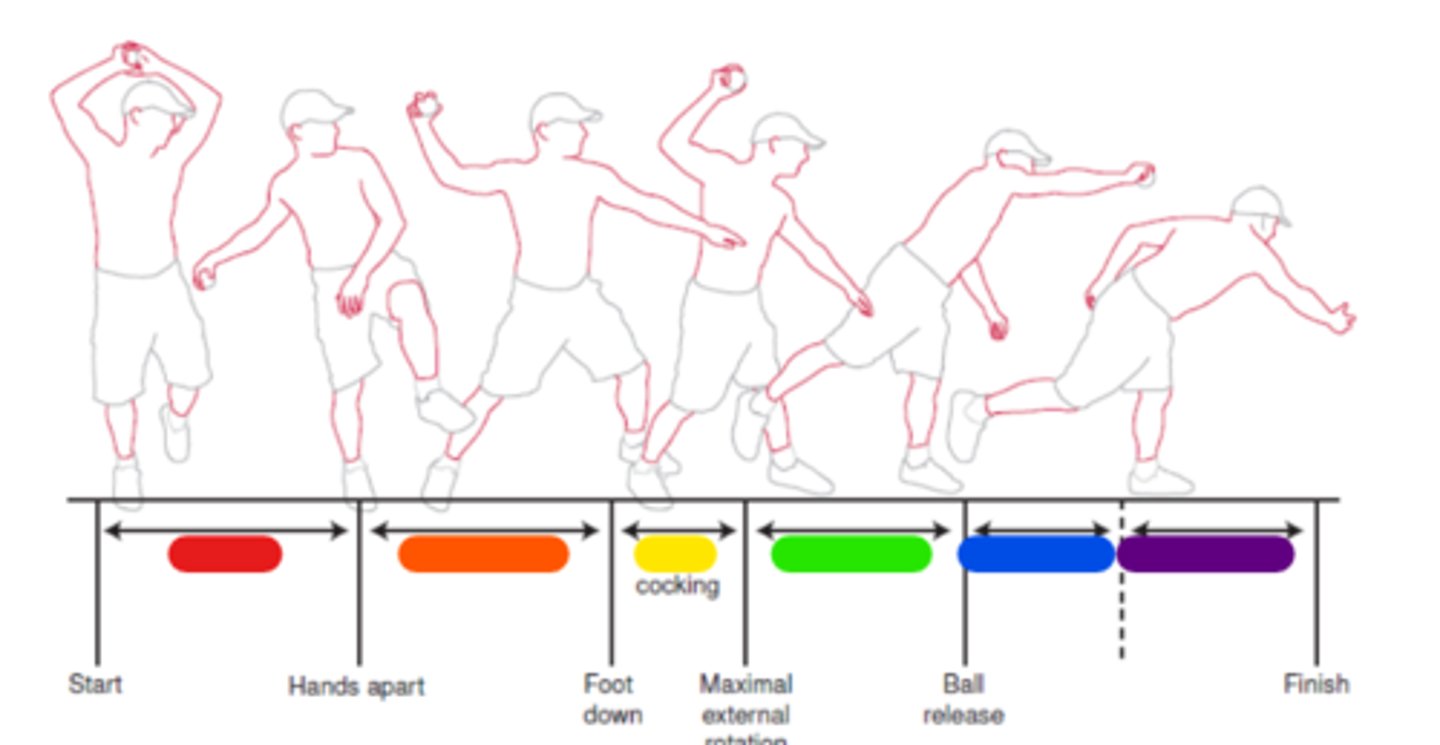
Early cocking
Orange in image.
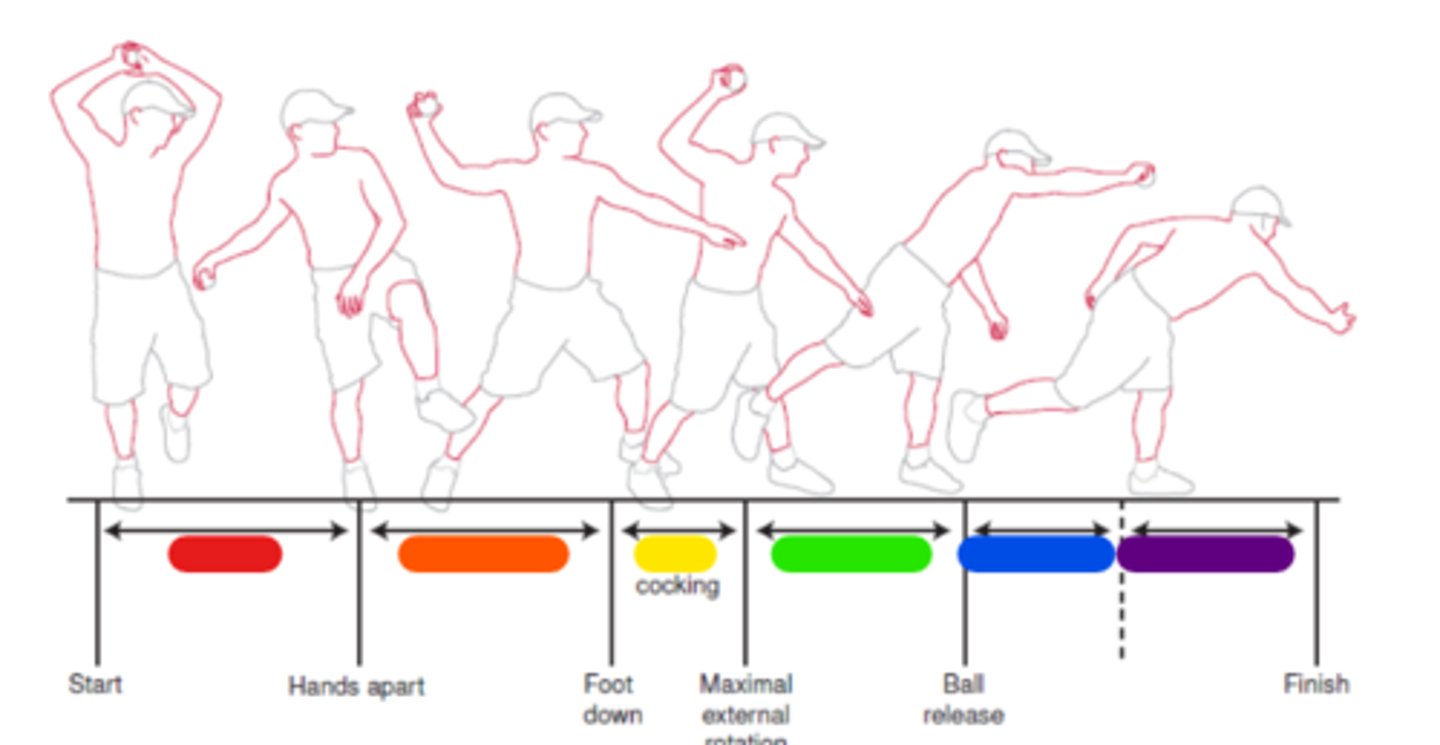
Late cocking
Yellow in image.

Acceleration
Green in image.
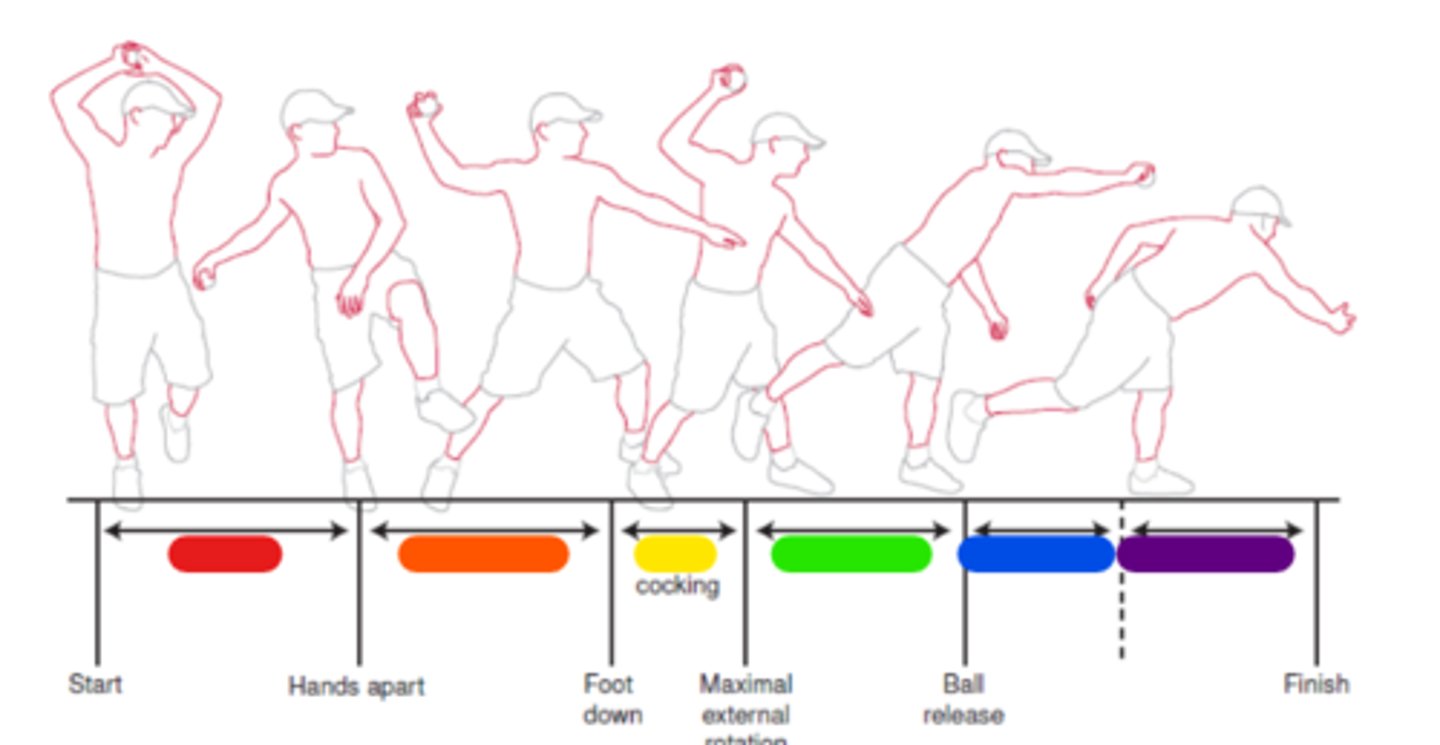
Deceleration
Blue in image.
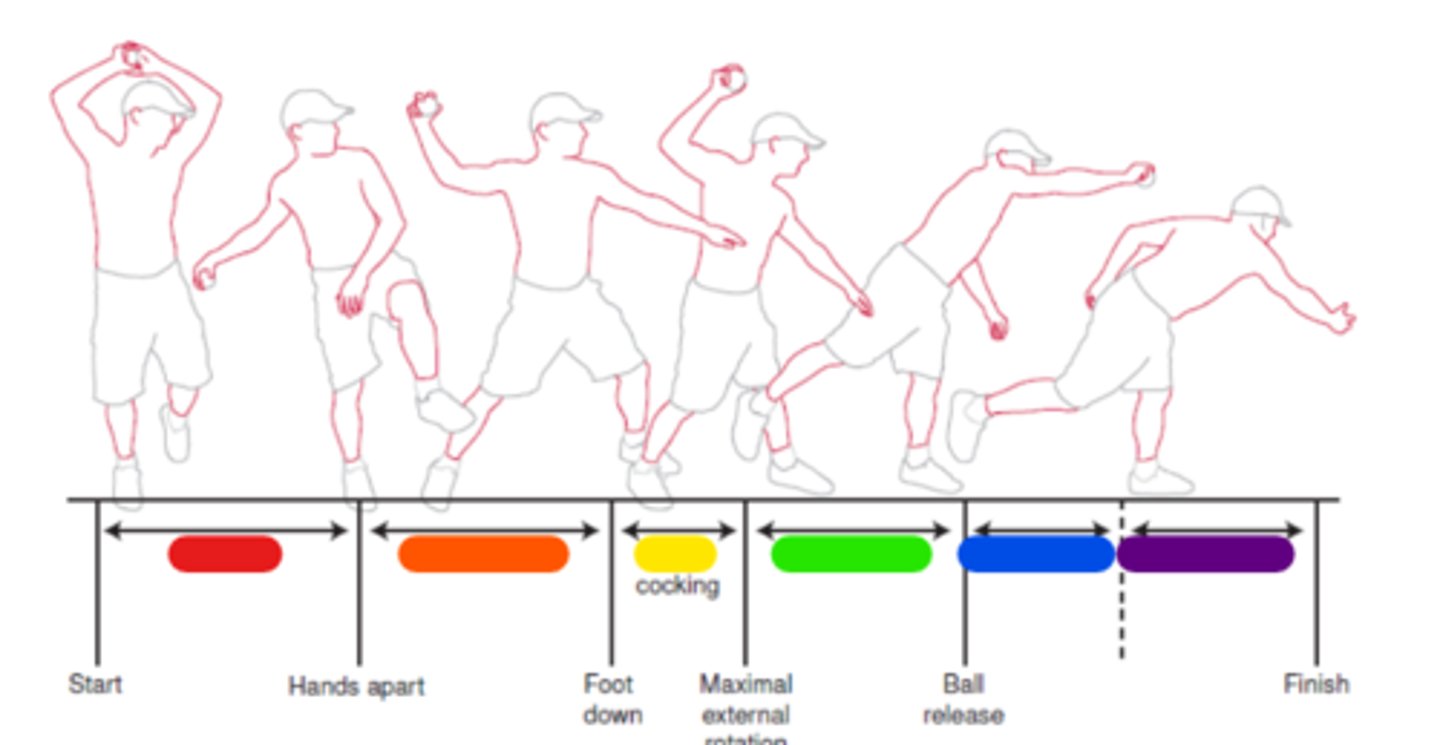
Follow through
Purple in image.
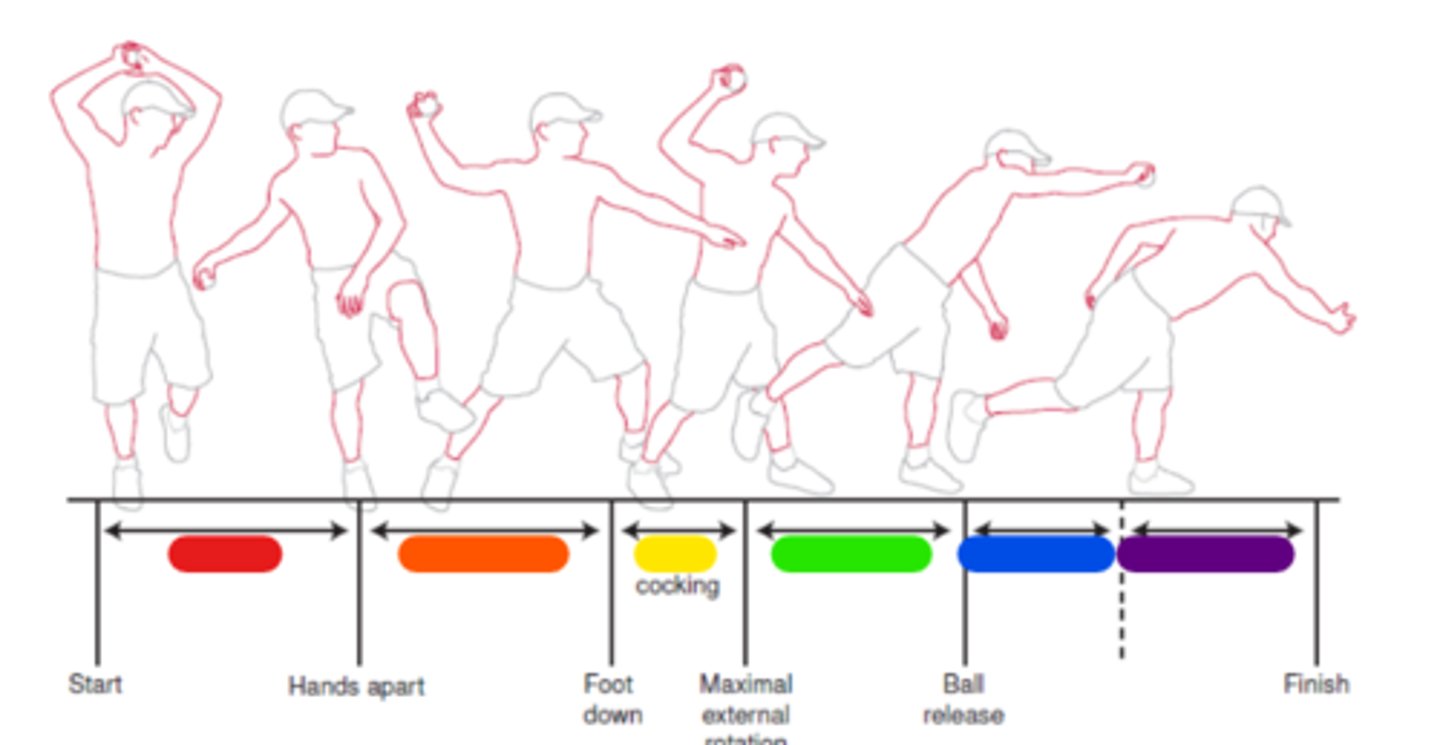
1. PNF D2 diagonal
2. ER/IR at 0° (or 90°)
3. Abduction to 90°
4. Scaption with ER
5. Prone horizontal abduction (at 120-135°)
6. Press up
7. Prone rowing
8. Push up
9. Elbow flexion/extension
10. Wrist flexion/extension, forearm supination/pronation
What are the Thrower's Ten?
Diagonal pattern flexion
What does the image show?
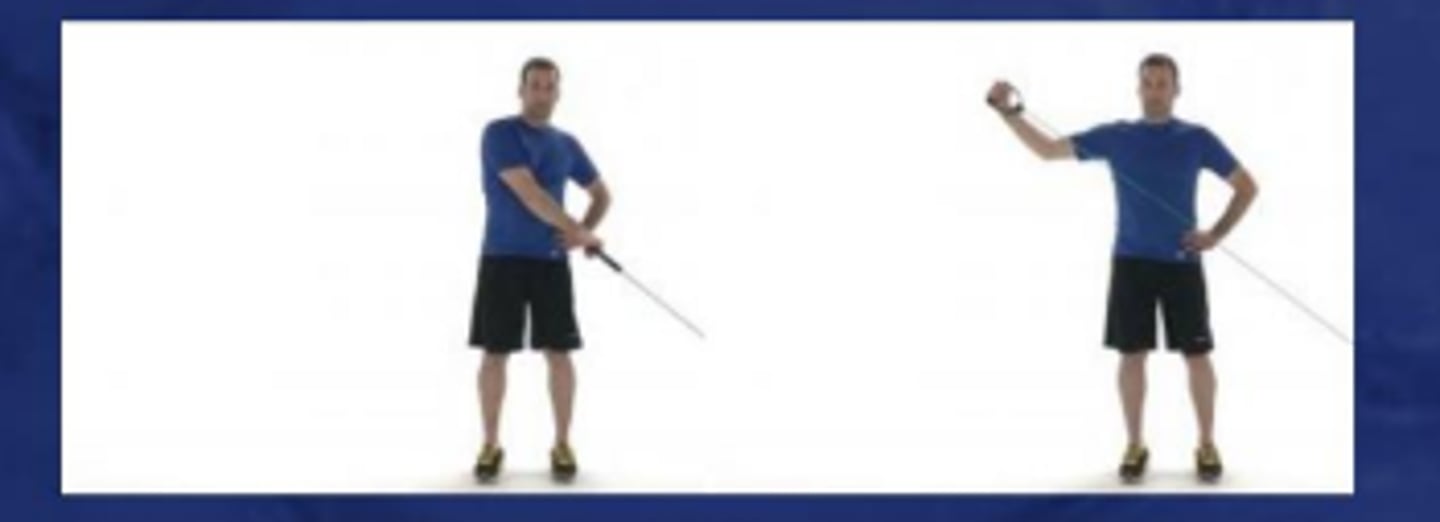
Diagonal pattern extension
What does the image show?
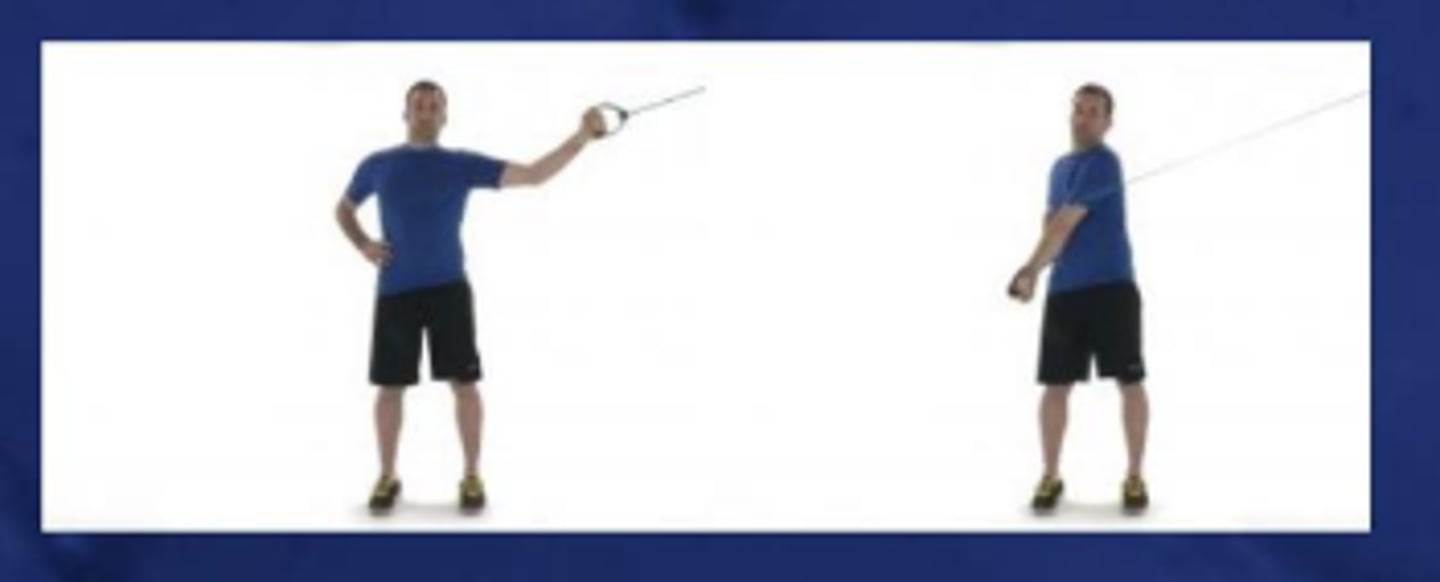
ER at waist
What does the image show?
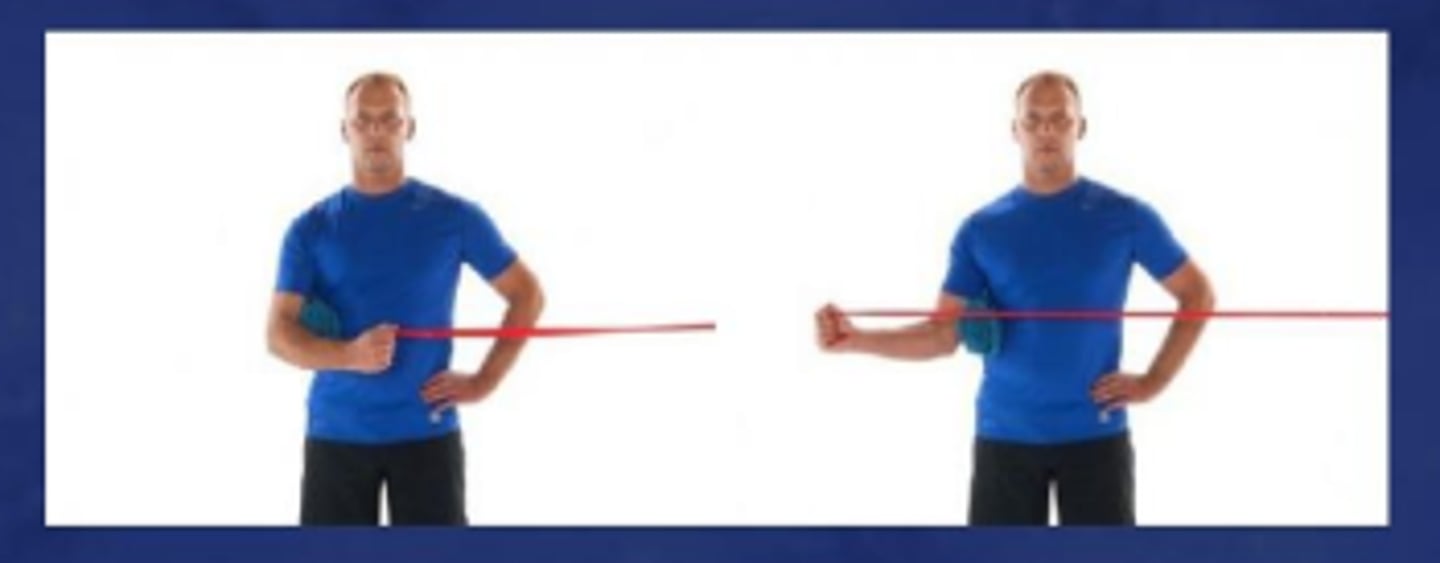
IR at waist
What does the image show?
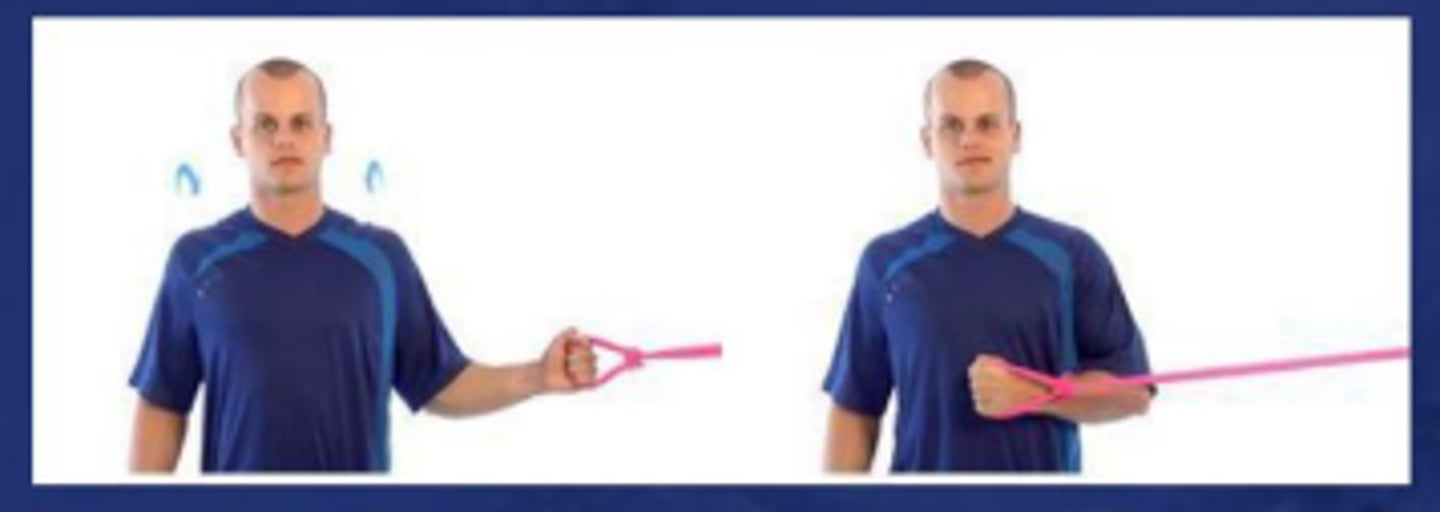
ER at 90° abduction
What does the image show?

Shoulder abduction to 90°
What does the image show?

Scaption with ER
What does the image show?

Sidelying ER
What does the image show?
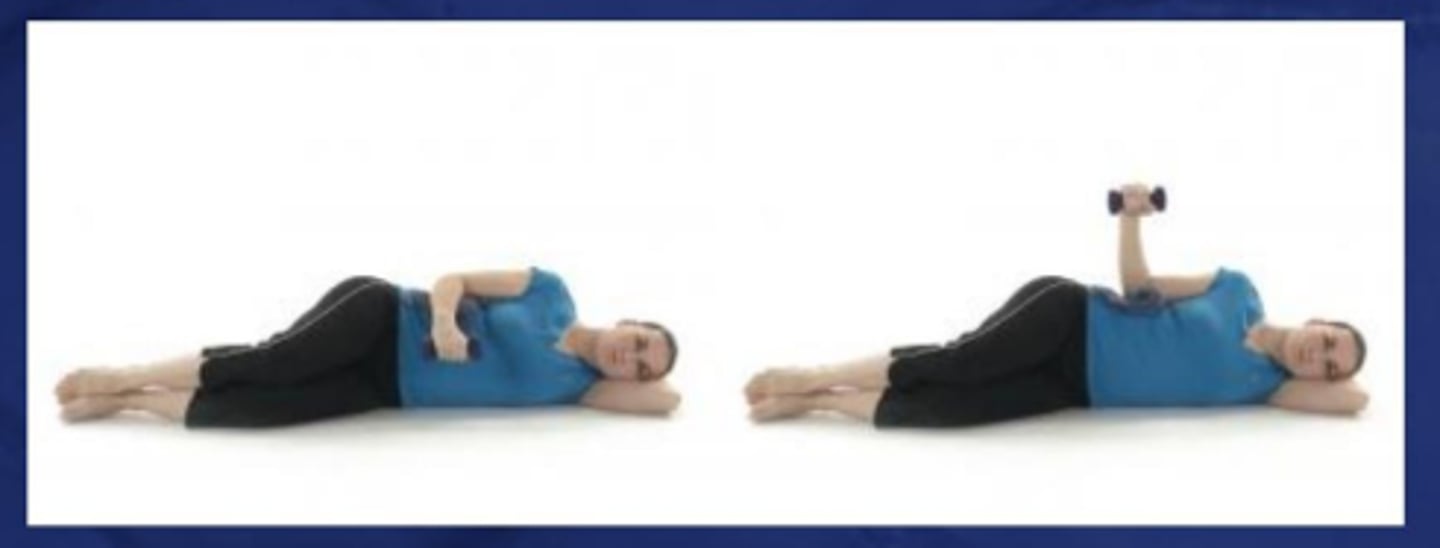
Prone horizontal abduction to neutral
What does the image show?
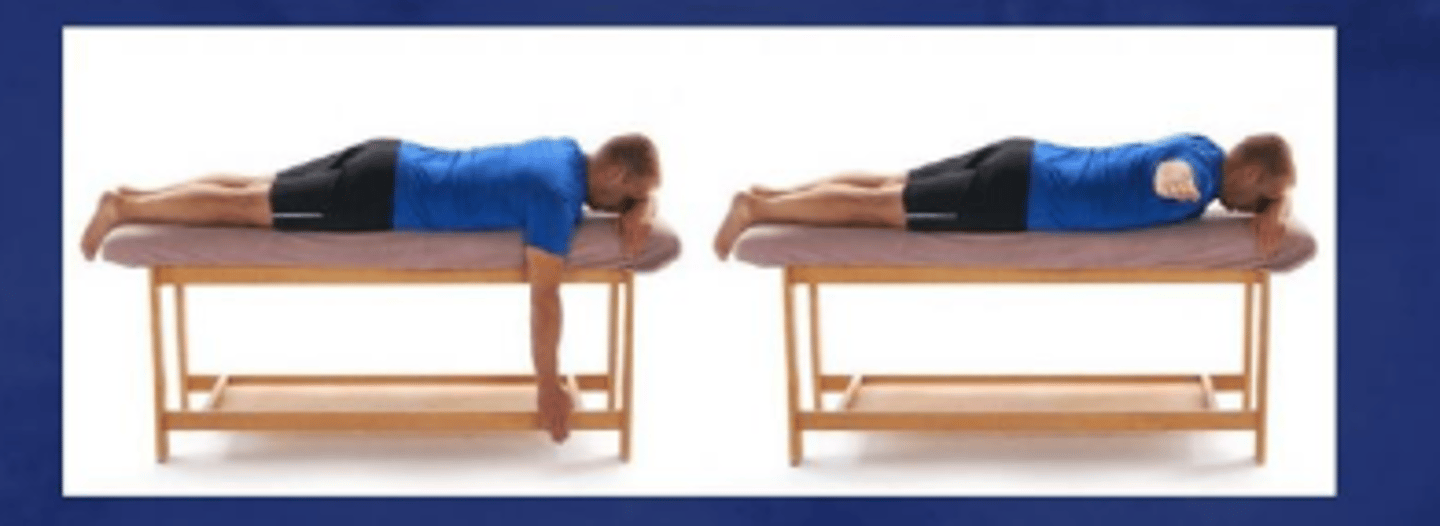
Prone horizontal abduction with full ER, 100° abduction
What does the image show?

Prone rowing
What does the image show?

Prone rowing into ER
What does the image show?
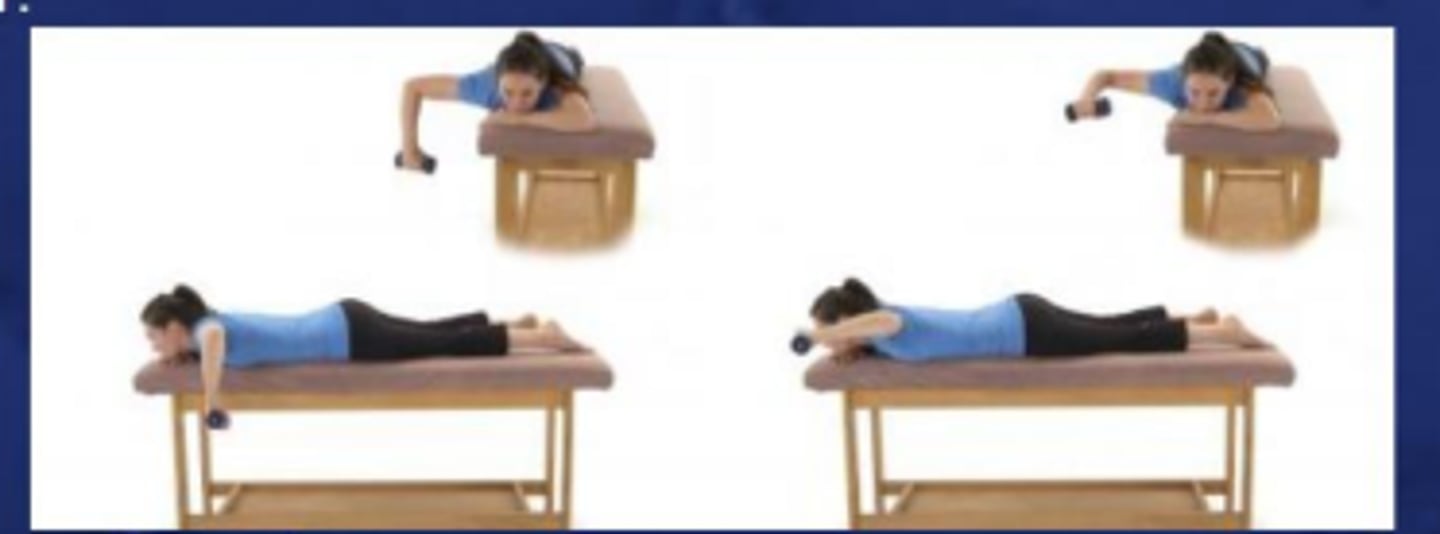
Press ups
What does the image show?
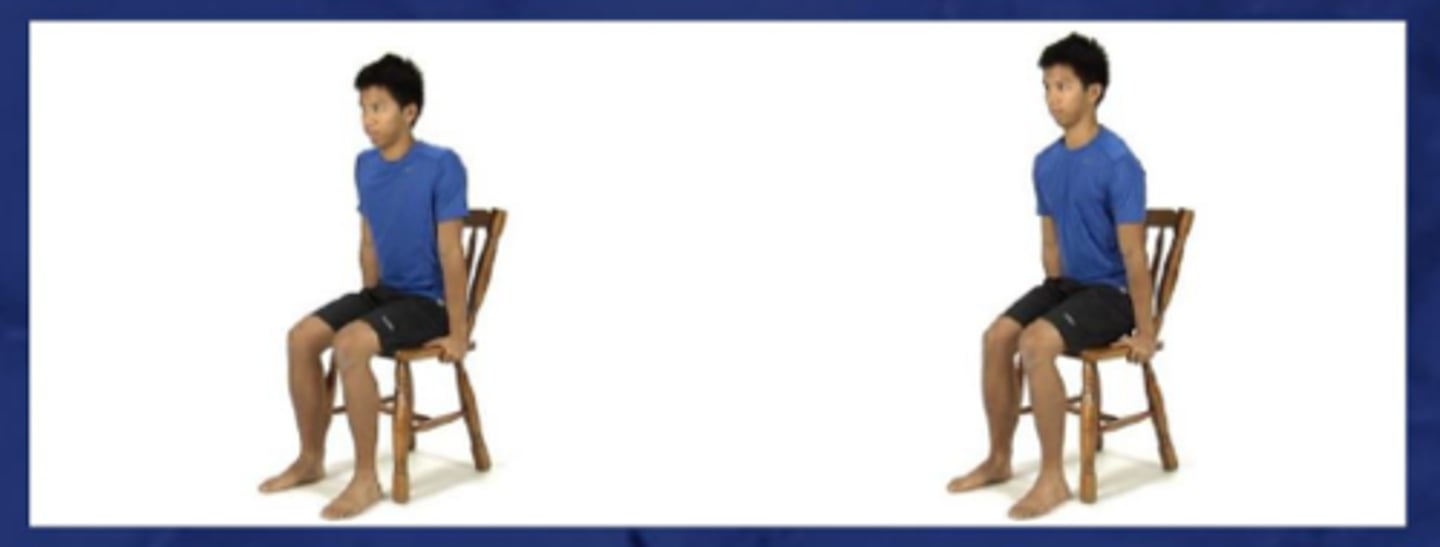
Push ups
What does the image show?

Elbow flexion (bicep curl)
What does the image show?

Elbow extension (tricep press)
What does the image show?
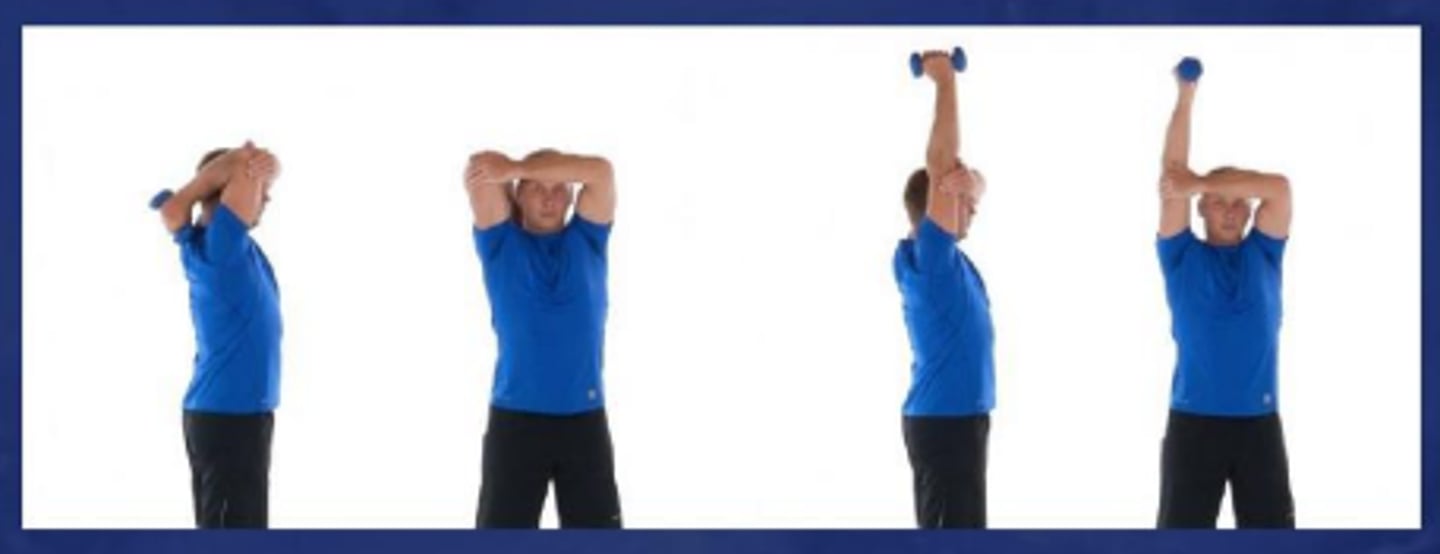
Wrist extension/flexion
What does the image show?

Wrist supination/pronation
What does the image show?

1. Active elbow flexion
2. Active shoulder flexion
3. Passive extension
4. Passive ER
What movements would be limited (contraindicated during maximal protection phase) for SLAP tears?